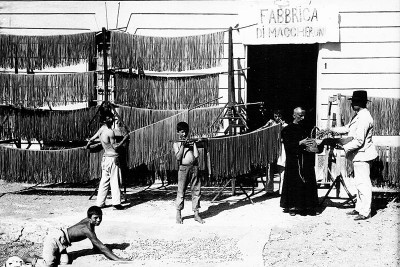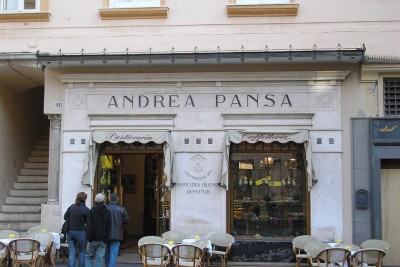From the Romans to the Amalfitans
A few miles of coastline still preserve the signs of century of history and culture









In the first century BC the Greek geographer Strabone wrote that the coast from Sorrento to Paestum looked “divine” was almost uninhabited, with the exception of the Etruscan settlement of Marcina, probably the present day Vietri sui Mare.
After Emperor Tiberius decided to make Capri his permanent residence the Roman aristocracy started building their villas by the sea.
At first, twelve villas were built on Capri, then one on the small island of Gallo Lungo (all that remains today are the pillars of the mooring and a cistern) and then another in Positano, near the Church of the Assumption.
The biggest Roman villa found on the Amalfitan Coast is the one in Minori, accidentally discovered in 1932 and only partially excavated.
The villa covered a large part of the lower area of the town today. The main entrance faced the sea and was surrounded by a peristyle, with a central swimming pool, and had many rooms with frescos and mosaics. A Roman nymphaeum from the 1st century AD was later found in Amalfi, probably from another villa.
Other more rural villas were built in the hinterland and on the hills of the Lattari mountain range in Tramonti, Bomerano and Ravello. At the time of the eruption of Mount Vesuvius in 79 AD, these villas were probably covered by lavic material, which was later washed downhill by torrential rain and floods.
The oldest document to certify Amalfi's official entry into history is one written by Pope Gregory the Great in 596 in which the pontiff reprimanded Pimenio, the bishop of the town, and told him not to "roam around" and live in the castrum.
First of all this letter indicates that Amalfi was a civitas-castrum, a Byzantine military outpost along the border of the Dukedom of Naples used to keep the Longobards at bay. Secondly, it shows that Amalfi was already a diocese and would have been a refuge for the people escaping the Longobards.

The Amalfitans started opening sea routes to the Orient and North Africa in the 8th century and established a triangular cycle with three phases.
In the first, the ships from Amalfi brought wood, a much needed raw material, to the North African Arabs, in exchange for gold from the inland mines.
In the second phase they bought spices, precious stones, rich fabrics and jewellery along the Syrian-Palestinian coast and in Constantinople.
In the third phase they sold these goods in many Italian cities, including Rome, Ravenna and Pavia.

This triangular cycle of medieval Amalfitan traders made many families wealthy, sustained the social and political status of the nobility and promoted the rise of families from the lower classes and created new social classes.
Their sound economy prompted the Amalfitans to decide to govern themselves, with their own leaders and laws.
The aristocratic elective republic slowly turned into a sort of ducal monarchy that was ruled for 115 years by the same dynasty
The Dukedom of Amalfi covered the entire coast from Cetara to Positano, the hill towns of Tramonti, Scala and Ravello, the mountain town of Agerola, the area around Castellamare di Stabia and Capri.
The only cities were Amalfi and Atrani, seats of the commercial aristocracy and the civil and ecclesiastical authorities.

The continuous profits from shipping and trade later saw the emergence of two new cities, Scala and Ravello, which became dioceses and were governed by a rising aristocracy. They also gained their own officially recognised aristocratic seats, as Amalfi had.
Many families from the area around Castellamare di Stabia and Tramonti moved to these two new aristocratic towns to go into shipping and trade so as to become part of the nobility.
The Amalfitans also had "virtual colonies" in the main North African cities, along the Syrian-Palestinian coast and in the Byzantine Empire had houses, shops, warehouses, streets, fountains, churches, monasteries and in some cases hospitals such as the ones in Jerusalem and Antioch, founded by the wealthy Amalfitan Mauro de Comite Maurone.
The Order of the Knights of St. John (later the Order of Malta) was founded by Gerardo Sasso from Scala in the hospital of Jerusalem. The order looked after pilgrims and the sick and protected from all oppressors.
Fishing was a major industry in the area, as the waters of the Amalfi Coast were a mare piscosum, a sea abounding in all types of fish.

Red coral was also collected and then worked in Scala. From the 15th century it was made into Pater Nostros, rosary beads for the clergy. This industry later moved to Torre del Greco and Torre Annunziata with great success. The old songs of the coral workers are still known today amongst the older generations of fishermen from Praiano.
In the late Middle Ages one of the oldest ironworks in Southern Italy was built in the Valle dei Mulini (Valley of the Mills). It was active from 1361 to 1804 and supplied the raw material for the forges in Amalfi, Maiori and Pogerola.
In the same area, the abundance of water lead to the establishment of a significant paper mill industry, which lasted until the middle of 19th century.

The cultivation of lemons along the coast was introduced from the Orient in the Early Middle Ages and by the 10th century the towns of Cetara, Maiori and Minori abounded with lemon groves.
Later on the terrace gardening of lemons spread along the whole coast thanks to an intricate irrigation system of stone canals and "fish tanks" or water pools. They produced limongelli piccoli, cetrangoli and marangoli that were exported to many regions in Italy.



